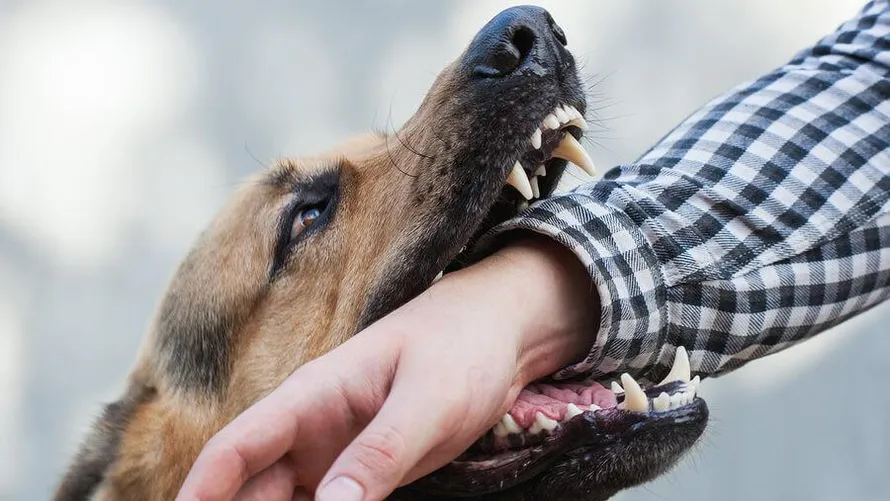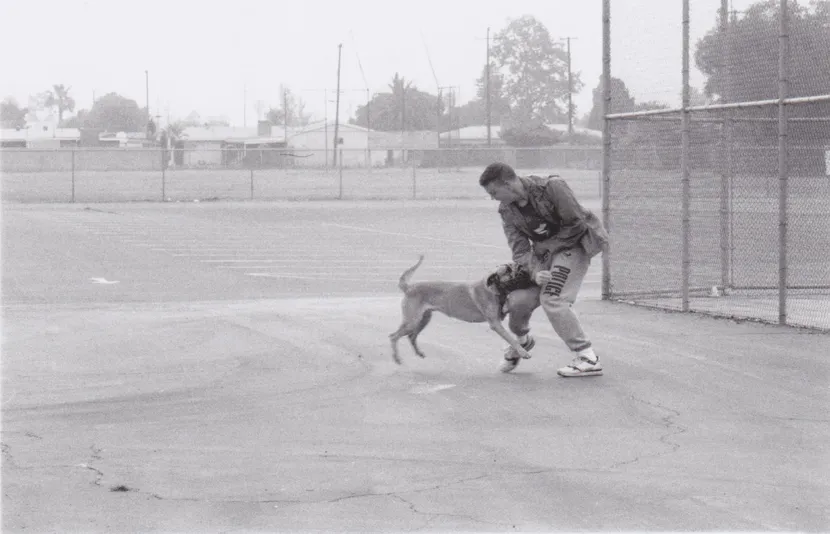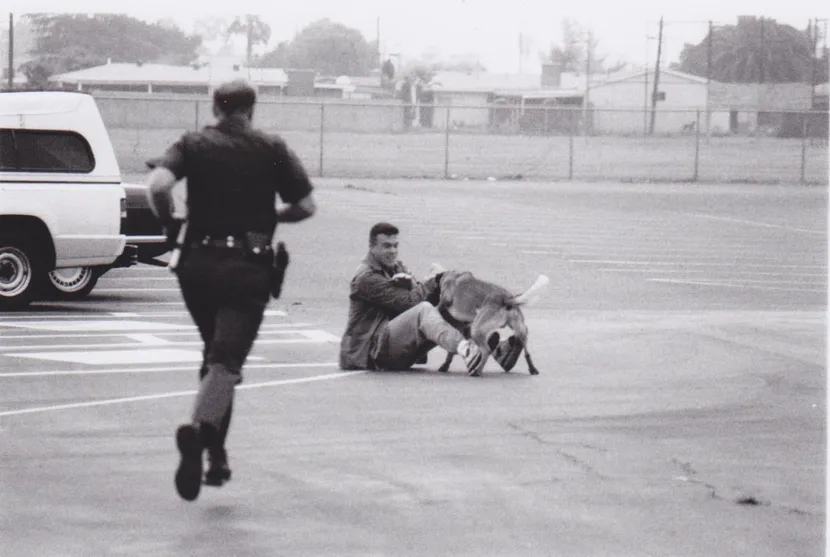June 28 | 2022

I’ll admit it. I’m afraid of big dogs. I have good reason to be. I’ve been attacked by them. Plus, as a former police officer I have seen firsthand the damage they can do to human flesh and bone. As a self-defense instructor the question that is asked from time to time in my courses, and I was just asked it again two weeks ago, is, “How do you defend yourself against a large dog that attacks you?”
t’s a good question because dog attacks are common. Approximately 4.5 million Americans are bitten every year, 6,000 to 13, 000 result in hospitalization, and approximately 30 to 50 deaths. According to the American Animal Hospital Association, the breeds that cause the most damage each year are pit bulls, German Shepherds, terriers, and Rottweilers; in that order.
I’m no dog expert, and I haven’t had a dog since I was a kid, but I know from my own personal experience what I would do if a big dog were to attack me. However, before I give you my techniques and tactics, I’ll present my qualifications.
My first introduction to attack dogs was when I was a recruit in the police academy. During the course titled Use of K9s for Policing, a fellow recruit volunteered when the instructor, a police K9 handler, placed a bite sleeve on his right arm. Then, from some distance away the handler unhooked the leash and released his dog. The dog shot towards the “suspect” in mere seconds, leaped into the air, and clamped down on the bite sleeve. The dog had so much force that he wrestled the recruit to the ground. The K9 handler had to pull on the dog several times before it would let go.
Some years later, at my police department, a K9 officer asked me if I was willing to put on the bite suit and help him train his dog. Since I was able to wear an entire bite suit, I agreed. I would have never volunteered if it were just the sleeve. With greater protection I saw it as an opportunity to experience a dog attack for myself should I ever have to defend myself against a large dog.
The reason that K9 handlers tell those willing to put on a bite suit to offer an arm is because if they don’t, the dogs go straight for the groin or the throat. Of course, I did exactly that when I was attacked. As the K9 charged me I offered it my forearm. I held it out from my body as if holding an imaginary shield up. My next move, once the dog’s jaw clamped tightly onto the thick padding around my forearm, was to immediately pull my arm close to my body so it couldn’t yank my shoulder out of the socket as it thrashed about. It had the strength to do it.
After a couple more attacks I discovered what worked, and here’s the result of my “research.”
1. First, try to scare the dog with exaggerated aggressive hand gestures and shouting. I’ve had several big dogs back down by intimidating them in this manner when, as a police officer, I had to go into people’s backyards unannounced.
2. Pepper spray is a good weapon against dogs, but it doesn’t always work against the most aggressive ones. Even if a dog gets a good dose of pepper spray in its eyes, it could take a few seconds for the chemical agent to take effect, and there is a lot of damage a vicious dog can do to you in three to five seconds. Of course, the trick is to have the pepper spray deployed and ready to use before the attack. The same is true for any weapon.
3. If the dog continues to charge you, and you’re unarmed, you may be able to do a front kick to its nose, provided the conditions are right for a kick: non-slip surface, good foot ware, and a low kick that easy that’s easy to recover from. Of course, the kick had better land, or the dog may slip past your foot and latch onto your groin with its sharp teeth.
4. Offer your secondary arm (that should be shielding your body) so the dog will take it, because you don’t want it to go for your groin or throat.
5. Before the dog thrashes around, pull its head to your lowest rib of your chest, while maintaining a deep fighting stance to maintain balance. This puts the animal’s eyes right where you need them. Then shove your thumb or finger into the eye of the dog. I’m talking dig all the way into the eye socket! Any animal that gets an eye poke, even a shark for that matter, will let go to protect itself from further injury. Yes, you may lose some flesh on your arm, but it’s the only way line up the target and keep it within reach.
6. If the dog does not let go, and that’s always a possibility, then there is another eye on the other side of its head within reach, as long as you keep your forearm close to your torso and don’t panic because of the pain.
7. If the dog stops biting you, you can then kick it away if it is still within striking distance.
8. If the dog manages to take you to the ground, and it’s still biting down on your arm, you’ll still pull in your secondary arm close to your torso and go for an eyeball, but you had better do it fast before it releases, maneuvers, and then goes for your neck or throat. Attack dogs are extremely fast, and they are natural predators.
As a self-defense instructor I’ve heard many opinions from my students over the years, like, “I heard you make a fist and then ram it down the dog’s throat to make it stop,” or “you just keep slugging it in the side of the head until it lets go.” Of course, my question to these students is always, “Have you ever been in a bite suit and experienced an actual attack?”
Experience is always superior to theory.
BE A HARD TARGET




